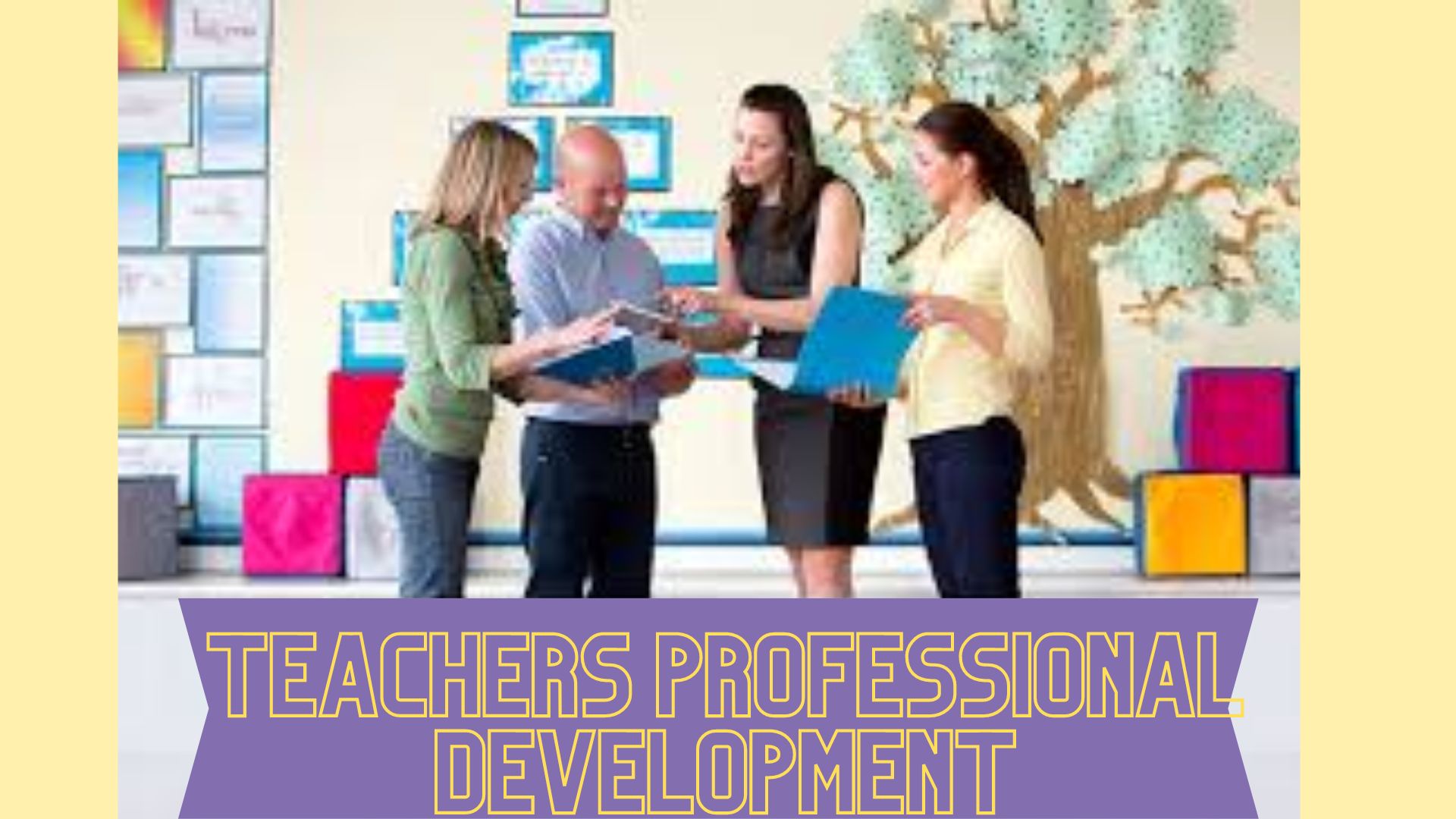As per research conducted by International schools in India, Teachers are always in need of professional development. There is so much to learn in the classroom and outside of it, teachers need to continue to grow and learn because students will always be learning new things. If a teacher has not continued their professional development in some way, then their teaching can become stagnant.
Benefits of Teacher Professional Development

Improved teaching skills and knowledge
Teacher professional development is an investment in the success of your students. Teacher professional development is a powerful tool for improving teaching skills and knowledge, leading to outstanding student achievement. Research shows that teachers who receive high-quality training make greater gains in student achievement than those who do not.
Research also shows that teachers who participate in professional development are more likely to make ongoing changes in their practice. In addition, teachers who participate in professional development are more likely to use evidence-based practices with their students and incorporate research into their lesson planning.
Increased job satisfaction
Teachers need to be continually learning and growing as professionals.
as per research conducted by International schools in India, In a study conducted by the International Society for Technology in Education (ISTE), teachers reported that they experience increased job satisfaction when provided with professional development opportunities. This finding is echoed by another study that found that most teachers believe their growth and effectiveness are enhanced through professional development experiences.
Teacher professional development can come in many forms, including workshops, conferences, online courses, and more. The goal of these programs is to provide teachers with the tools they need to become more effective educators.
Better student outcomes and engagement
Teacher PD helps teachers improve their skills, knowledge, and confidence so they can better engage students in classroom learning. The results? Better student outcomes and engagement, including higher academic achievement and improved attendance for students from low-income families.
Teaching is an art and a science, but it’s also a profession that requires ongoing learning to keep pace with changing times and new technologies. Many states have adopted rigorous standards for teacher quality that require teachers to demonstrate subject mastery — especially in math and science — before they’re allowed to teach in public schools. That’s why it pays to invest in teacher professional development like coaching or mentoring programs that help teachers improve their practice by providing hands-on support tailored to their individual needs.
Staying current with new technologies and best practices
Teachers are the heart of the classroom, but they also need to keep up with the latest in education.
They are responsible for preparing students for the future, and that means being a leader in their classrooms. Teachers are constantly learning about new teaching methods, technology, and resources that can help them become better educators. In addition to helping teachers keep up with the latest trends, professional development also allows them to collaborate with other teachers from around the world. This kind of collaboration fosters healthy competition and provides teachers with new ideas for how they can improve their teaching practices.
Types of Professional Development for Teachers

In-person workshops and conferences
These are often the most popular professional development options because they’re easy and convenient. They’re also usually a good way to meet other educators from around the country or state who share similar interests. If you’re looking for something specific, like training on a new content area or technology, then an in-person event might be right for you. However, if you want to learn about general leadership skills or gain exposure to different ideas about teaching and learning, then in-person events may not be as helpful.
Online courses and webinars
Online courses are a convenient way to learn new skills without having to leave your home or office. You can take them at your own pace, which makes them ideal for busy teachers who don’t have time for in-person training events.
Webinars allow you to connect with other educators from anywhere in the world through video conference technology like Skype. These events are often recorded so that you can watch them later if you miss the live session.
Collaborative learning and peer mentoring
This approach to professional development is based on the idea that teachers learn best by working together with other teachers. Teachers may meet regularly with a small group of peers, or they may be assigned as mentors to an individual teacher at another school. In either case, the goal is to develop lasting relationships between educators who share similar interests or experiences.
Mentorships can take several forms, but all involve a teacher who has more experience than their mentee sharing knowledge and skills with them. Peer mentoring allows both parties to share their successes and failures to create a more transparent learning environment. This type of relationship encourages collaboration among educators and mutual respect for their roles within their respective communities.
Graduate degree programs
When someone wants to become a teacher, they usually have to earn a bachelor’s degree in education or a related field. This might include an associate’s degree or certificate program, which can be completed in two years or less. After this initial training, many teachers decide to continue their education by getting a master’s degree in education (MEd), which typically takes two more years beyond the bachelor’s degree. There are also doctoral programs available for those who want to become tenured professors at universities or colleges. Some of these programs take five or six years and require students to complete a dissertation on a specific subject area (such as English literature).
Self-directed learning
Self-directed learning is often a good way for teachers to grow and learn about new pedagogical methods or strategies for managing a classroom. Teachers who take the time to study and practice new techniques on their own can bring them back into the classroom and teach their students valuable lessons on how to learn from their mistakes.
One example of self-directed learning is teaching a lesson plan or technique to a group of peers. This can help improve your skills with an outside perspective and give you suggestions on how to improve your lesson plans.
How to Plan and Implement Effective Professional Development?

Setting goals and identifying areas of need
The first step in developing an effective professional development program is setting goals. These goals should be specific, measurable, and attainable. For example: “I want to improve my communication skills with customers,” or “I want to become more proficient with Microsoft Office.”You should also set a timeline for achieving these goals. For example, if you’re working towards becoming more proficient with Excel, set a deadline for completing certain tasks. If you don’t have time during work hours, consider taking an evening course or joining an online class.
Choosing relevant and engaging learning opportunities
It’s important to choose the right professional development activities for your organization. If you are offering a class or seminar, make sure it is relevant to what your employees do every day. For example, if you have a sales team, don’t have them take a course on customer service. Instead, offer training in sales techniques and skills that will help them close more deals.
When choosing learning activities for employees, make sure they are engaging and fun. People learn best when they’re having fun!
Collaborating with colleagues and seeking feedback
Professional development is an essential part of career growth. It’s also a way for you to keep up with changes in your industry, improve your skills and knowledge, and expand your professional network.
It’s important to plan for professional development because it can help you advance in your career or even change careers. You might want to take some time to think about what you want to accomplish, how much time you’re willing to devote to it, and what kinds of activities will be most useful.
Applying new skills and knowledge in the classroom
Professional development is a vital component of a teacher’s job. Teachers need to continually improve their teaching practices, learn new strategies and skills, and take advantage of the latest technology. Professional development should be ongoing, not something that you wait until the end of the year to do. It should be integrated into your daily life as a teacher so that you can constantly be improving your practice.
Conclusion
Teacher professional development events, conferences, workshops, and online courses are commonplace today in every state. With so many resources available, it is possible to improve your teaching skills daily. As we’ve seen throughout this report, there are many techniques for teachers to use at their fingertips. Whether it is a workshop or a lesson plan that helps you become the best teacher you can be is what matters most.







